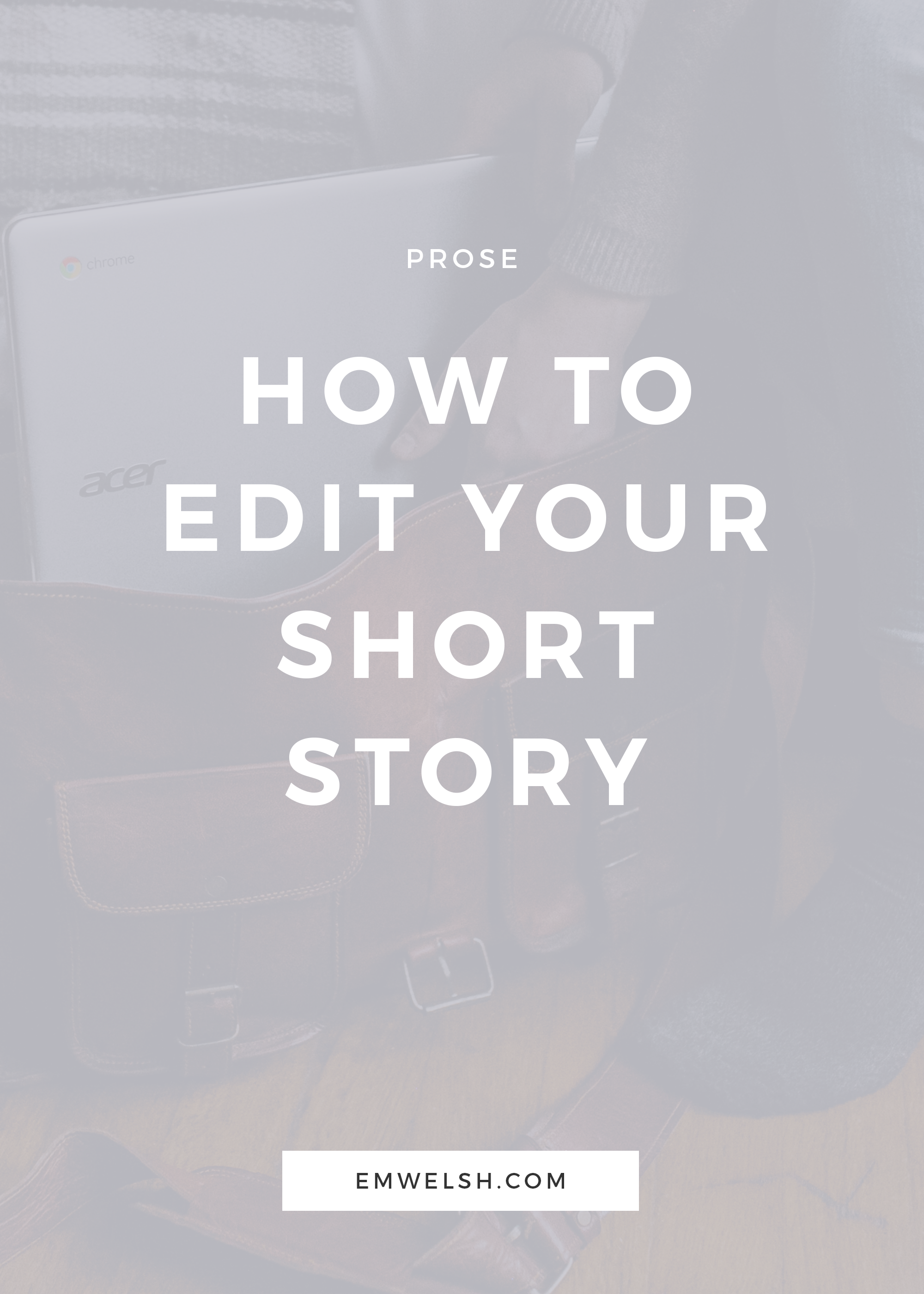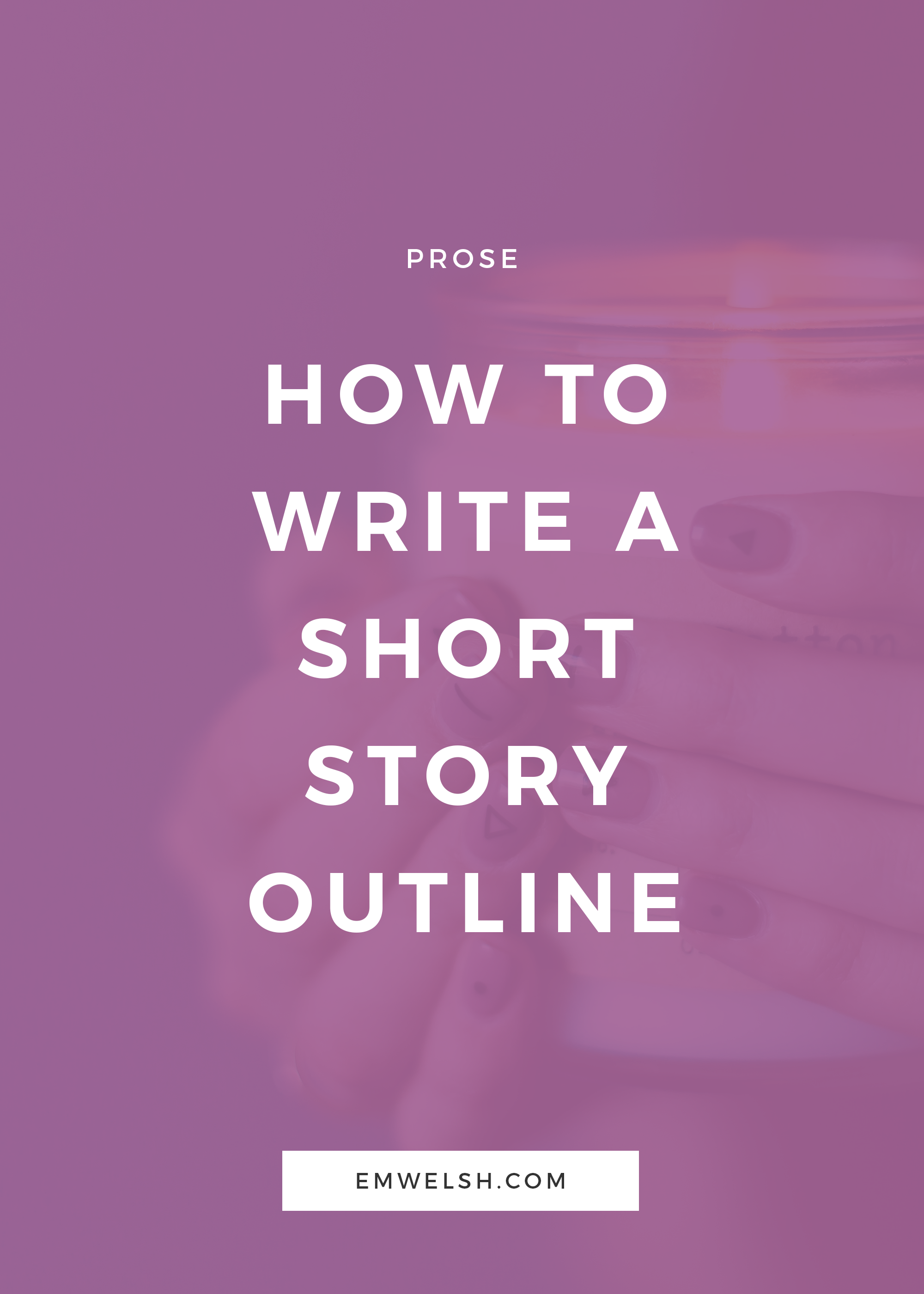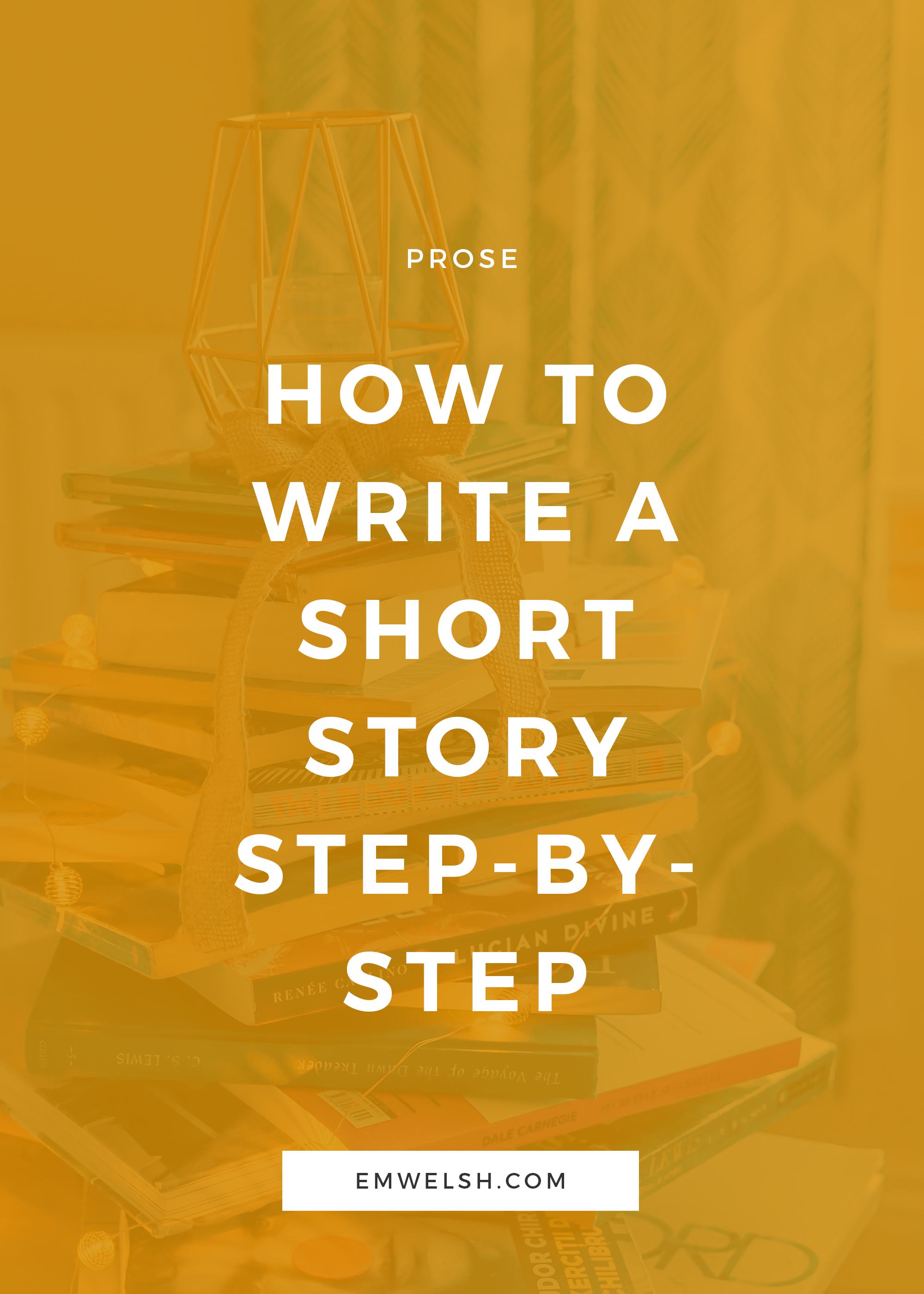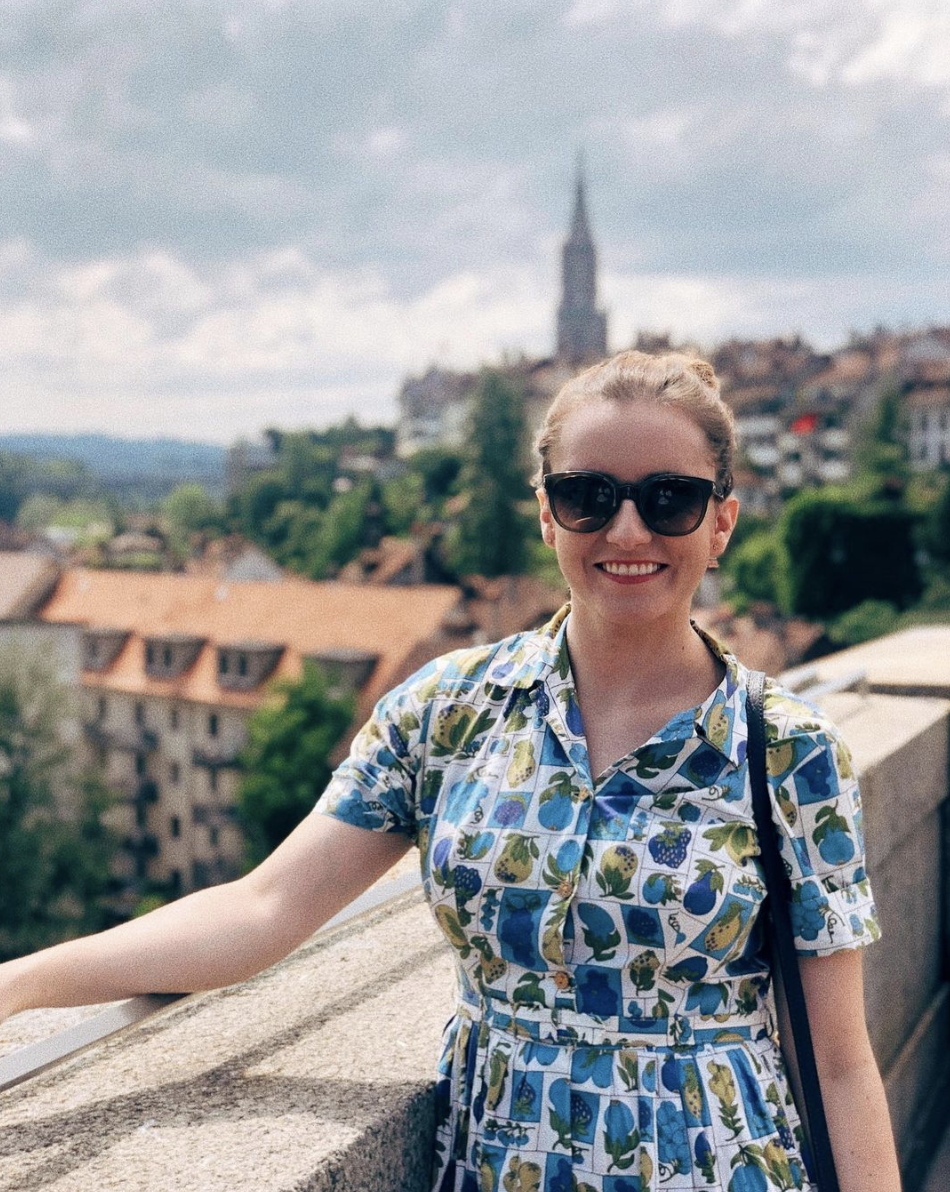How to Adapt Your Novel into a Screenplay
/Many novelists dream of seeing their books adapted into films – or maybe they don’t and only accept this proposition later on when the paycheck appears. Maybe it’s so their stories may reach a wider audience, or maybe it’s because a film suggests some sort of higher level of success and validation.
No matter what they hope for though, it’s no mystery that many authors – and their fans – are usually disappointed by their novel’s adaptation.
Look at Stephen King. Though many of his books have been adapted into Oscar-winning films, legend has it he has hated every single adaptation ever made.
Surely then if no one can make a movie even Stephen King is satisfied with, there’s no hope – right?
Movies always seem to “get stuff wrong” or “leave stuff out.” Avid fans of the books are almost always let down and many deeper elements are smoothed over to make for a quicker story. Yet the adaptations continue to happen, and guessing by the trends in Hollywood, will continue to do so for many many years.
However, the reality is that adaptations don’t always have to be bad. They can be absolutely amazing and equally as great as the book if done well. While a novelist doesn’t need to have to be part of that process for this to happen – look at No Country for Old Men – if you really want to see your novel adapted well, you need to understand what makes films different.
Why You Need an Adaptation Plan
Even if you never want to touch a screenplay in your life – which I will try my best to dissuade you from believing as there are many reasons novelists should write screenplays – if you want to see your novel adapted into a story that you’re happy with, you have to understand the process and why things get cut and changed.
It’s not because they hate those elements of your story or want to make them more simple, it’s because filmmaking is different and cannot meet all the needs of your novel. This doesn’t mean your adaptations have to be a watered down version of your story – unless you let them be – but that you must alter the way certain elements of your story are presented.
This is why you need some sort of idea as to how you want your novel adapted. It gets you ahead of the adaptation game and helps you ensure the story is adapted well and in a way you are satisfied with so you don’t have a Stephen King moment.
Additionally, if you have an adaptation plan you are better suited to envision your story in a new way, using tools like visuals and sounds instead of words, making the process of translating your work from a novel to a film much easier. This, in turn, makes it easier for you to communicate with the production team, screenwriter, or any other people on set about what your vision is for the film, not the novel.
How to Plan Out Your Adaptation
Now that you understand why it is so important to plan out your adaptation – even if you don’t intend to actually write it – let’s discuss some different ways you can start translating your novel into a movie.
Decide Your Five Key Scenes
First and foremost, you’ll want to decide your book’s five key scenes. These five scenes will be the ones that are most accurately translated into the film because without them, your story would fall apart.
What are key scenes?
The key scenes of any story are the ones that tell the story in its simplest form. They embody the core of your story, ignoring elements like exposition and backstory and other features that make those scenes possible, telling only the most essential aspects of the narrative.
Many times these scenes contain a pivotal or memorable moment that defines the story, though that is usually because many key scenes are high-emotion scenes, and as a result the scene being memorable is not necessary for your scene to be a key scene.
The most notable feature to keep in mind is that a key scene is the core of your story, and that essentially, without one of these scenes, your story would fall apart.
Finding your five key scenes
One of the easiest ways to determine your five key scenes is to divide your book up into a structure or outline, even if you feel it is more of a structureless, literary piece.
You can do this by breaking up the story into three acts, then taking one scene from each act so that you have one scene from act one, one scene from act two, and one scene from act three.
Then, take two more scenes from any of the remaining acts, though ideally don’t take more than one extra scene from acts one or three or more than two scenes from act two.
For example, let’s look at Harry Potter and the Sorcerer's Stone.
The five key scenes would be as follows:
Scene 1: Harry goes to Gringotts with Hagrid. Learns about mysterious package.
Scene 2: Potions with Snape. Snape hates Harry.
Scene 3: Harry learns about the package’s contents. Sorcerer's Stone = eternal life!
Scene 4: Harry finds out Snape is after the Sorcerer's Stone
Scene 5: Harry faces Voldemort (not Snape) – the guy who killed his parents – and wins! (Sort of!)
You might look at this scene breakdown and think – ”what about Harry becoming a wizard? And going to Hogwarts?”
However, those key scenes are part of the larger narrative of the series, not of this particular book. If we are to look at the pure story of the first Harry Potter book, we’ll find that the narrative is rooted in Voldemort’s return, with Harry going to school being part of the exposition and backstory.
Now, when you go to compare both the book and movie for these key scenes I’ve listed, you’ll notice that the scenes themselves are almost exactly the same. This is because the story depends on these scenes existing in the form that they do, hence why they are the key scenes.
So, now that you understand what key scenes are, break up your novel into your five key scenes and jot those down.
What makes a good scene?
In novel writing, a scene can be as long or as short as it needs to be. They can go on for the entire book if they’d like, or just for a few paragraphs.
In films and television, scenes are usually shorter, about 2-3 minutes long max, though this is according to the Hollywood standard, something I am adamantly against.
Instead, the phrase “get in late, get out early,” is a good phrase to remember when translating your key scenes from your novel to your film. While your audience may be patient enough to sit through a fifteen minute scene, if you can trim down your scene and enter it as late as possible and end it as soon as possible, cutting out the “hello’s” and “goodbye’s,” you’ll be writing stronger scenes for your film, but on your terms.
Grab your FREE 30+ page workbook!
What to Cut From Your Novel
After you’ve found your five key scenes, you’ll likely have a lot left to consider. Instead of trying to adapt everything you have left though, it is easier to focus on what you should cut out, especially if you have an enormous novel.
Before you freak out about cutting things out of your story, though, remember that your adaptation and your original novel are two separate works, so that your novel version will always exist. You’re just trying to find the best way to adapt that work into a completely new story.
Characters
Cutting out your characters may feel difficult at first, but remember, your film audience has a lot less time to learn and remember people than a book audience would, so if your story is brimming with too many people you’ll need to cut and combine them so that your story works better in the medium.
While it is always up to you who to cut and who to keep, here are some people to start with:
FAMILY – It may seem at first like family is necessary – and if you are telling a story about a family, then it is. However, if you’re not telling a story about a family, it’s better to focus on one or two family member’s and your character’s relationship with them instead of trying to flesh everyone out in your adaptation, as there is just not enough time to give everyone that relationship.
Too many family members can make them feel like stock characters instead of fleshed out people, making the story feel crowded and oversaturated. So, while it may hurt to cut that father-daughter scene out or combine it with the brother scene, cutting the dad’s lines out altogether, if it balances the number of characters in your story, it may be the right choice.
FRIENDS – Just like with family, too many friends – unless it’s a movie about a large group of friends – can make everyone become very forgettable in a film, since, as mentioned, a film audience cannot keep track of as many characters as readers can.
Instead, focus on two key friends and try to keep main friend groups to about 5-6 people. Again, it’s not to say too many friends is bad in a story, but that because of the film medium, the audience can only keep up with so many people before it gets confusing and they lose sight of what’s more important – your story.
SIDE CHARACTERS – Side characters in this instance refer to anyone else besides family and friends. Anyone with minimal lines can be combined with others, and characters who only appear once and are easily forgotten should also be omitted. Any side characters that are left should feel distinct and memorable.
If you find you still love some of the side characters who don’t have room in your film though, give them a silent role and have them exist in the background (literally) as a visual asset and storytelling.
Subplots
Unless you’re adapting your story in a television series – a whole different type of writing – then you likely are going to want to trim down your number of subplots.
Subplots work wonderfully in films, so don’t get rid of all of them. Instead, find your most powerful subplots, the ones that emphasize theme, character development, or the main conflicts. Look at the subplots that explore relationships and the internal as well, as these are features you cannot express the same way in film as you can in literature.
Once you’ve found a few subplots – ideally between 2-3 – cut out the rest as any more will not fit into a full-length film.
Strengths From Prose
Finally, the most tricky thing to cut out of them all – you’ll want to cut out and ignore the pieces of your story that make it unique to novel writing.
This means literary devices, use of language, and narrative styles that are strict to prose. The reason you must cut these things out is because they are strengths of prose and cannot exist in film. Instead, the strengths of film are visuals, sounds, and the camera, so you’ll want to fill up your adaptation with a focus on these strengths instead so that the work really stands out as a separate entity.
This notion might be a bit hard to wrap your head around, which is why I created a course specifically for literary fiction writers who want to write artistic screenplays called Swank Up Your Script.
Most of the work you will do to cut your strengths from prose will happen in the actual adaptation part of this process – when you’re writing your script – however, noting ahead of time that you’ll need to let go of those literary devices will make the process much much easier.
Translate Your Voice
A lot of fiction writers fear losing their voice as a writer when they switch to a new medium. But as my case study of J.K. Rowling demonstrated, you never can lose your voice when you write in new mediums. Instead you just use it in a new way!
Dialogue
Dialogue is one of the few features from your novel that you can carry over verbatim, which is why translating dialogue into a screenplay is so easy.
Though you will need to cut down some monologues or conversations, the lines of dialogue themselves can stay more or less exactly the same.
All you’ll really need to do in the writing process is break up the dialogue with action somewhat if your story isn’t doing that already.
Description
The voice of your description, backstory, exposition, and so forth will become the style guide for the rest of your film.
Highly descriptive passages and sentences with a lot of style suggest a more detailed and full background, whereas short passages and sentences lacking in adverbs and adjectives might suggest a more clean and minimalistic visual experience, though other factors like tone and themes can also influence your film’s visual storytelling.
In general though, use the description to create a starting backdrop for your story, even if later on you may change things, this is your place to find what types of screenwriting tools you will use.
As a result, this is where you’ll want to devote some time learning the strengths of screenwriting and how to use those strengths, which I teach in Swank Up Your Script in great detail, as this will translate your descriptive voice the most accurately.
Narrator
For many novelists – especially those with a first person narrator – it is tempting to think your story needs a voice-over. However, voice-overs are often overused to explain the plot or the internal world of the characters, when in reality those things can be deduced via visuals instead.
To avoid using voice over as a crutch, I suggest using the camera as your narrator and imagining your narrator in your novel as the person holding the camera and telling the story that way. By doing this, you’ll be able to translate their storytelling style in a new way, while still staying true to the film medium.
Otherwise, should you believe you need a voice-over narration, you must have a really strong reason for it that goes beyond someone providing backstory and internal monologues.
Sentences & Paragraphs
Sentences and paragraphs are like the “shots” of your film that make up the scenes.
While how you translate these sentences and paragraphs is up to you, I like to mirror the style as accurately as I can, so that if I am writing long sentences and paragraphs, the shots go on for a longer period of time, whereas if I am writing short, quick sentences, the film is filled up with short shots.
Again, how you do this is up to you, and since you are not the one who will determine the actual shots, you can only take this exercise so far in the screenwriting process.
Chapters
Chapters can easily translate into scenes. Most films have about 40-60 scenes, so that if you have that many chapters you can easily use those to guide your story.
However, if you have tons of chapters, this may mean cutting and combining them, or if you have incredibly lengthy chapters, it may mean dividing them up into separate scenes, like Harry Potter and the Sorcerer's Stone as a film is divided.
Additionally, use the flow of your chapters to guide the flow of your narrative, so that if your novel has really short, introspective chapters, you’ll want to fill your film with more quick visuals and indications of the internal. But, if you have longer chapters, you’ll want to mirror that with hearty scenes and lengthy periods of story without breaks.
Again, this style is all up to you, but take notes on how you want to imitate your novel’s style and translate it into a film.
Tips for Success
Before you dive into adapting, there are some few extra tips for success worth noting. These tips will not only make the process easier, but yield a better script overall.
TIP #1: Treat the screenplay as a separate story altogether
This tip actually speaks to both the audience and the author. When a book is adapted into film and done so with respect for the work, trying to translate the work as best as possible, these two versions of the story become two separate pieces altogether, not something to sit and compare.
Thinking about the process this way will ensure you give your screenplay version of your story everything you can, treating it as a new project altogether that you must alter and mould into the best version possible for film, not for your novel.
Should you get wrapped up in comparisons, you’ll constantly think that the screenplay is holding you back instead of holding you back.
TIP #2: Learn the screenwriting medium strengths
If you really want to tell your story again as a film and tell it in a unique and satisfying way that does justice to the original story, you’ll need to learn what makes screenwriting so special and different from novel writing.
Luckily, this actually takes less time than you would think, especially with some of my courses like Swank Up Your Script and Swiss Army Storytelling that help writers perceive and implement the strengths of each individual medium.
TIP #3: Be prepared to kill your darlings to tell a better story
Though this third tip ties in directly to the first, it’s important to make a separate note that to write your story as a solid film, you’ll have to be prepared to kill your darlings from your book so you can make more room for more medium-specific moments, such as a scene that focuses on sound design or shadows and light.
Again, take it back to tip #1 – this doesn’t meant those moments are forever gone from your story. They just exist in a different form, a form that maybe cannot translate well into film. And instead of forcing those moments to work in film when they never could – arguably the reason many novelists hate their adaptations – it’s better to let them remain in your novel and make room for new scenes and parts of your story in your new film version.
















